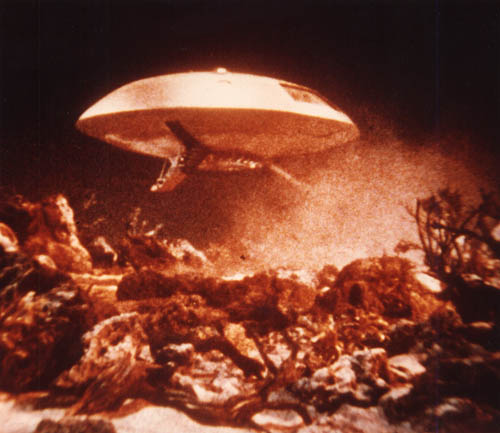
Jupiter II Miniature

Jupiter II Miniature
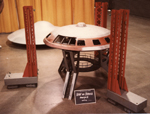 |
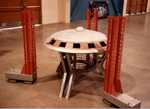 |
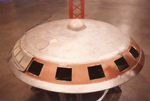 |
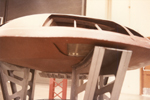 |
 |
 |
 |
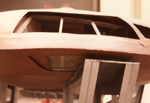 |
 |
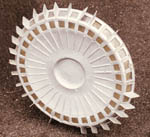 |
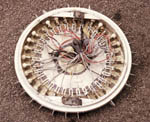 |
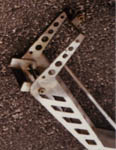 |
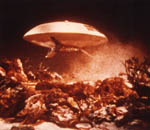 |
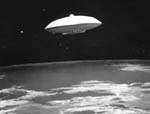 |
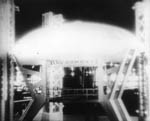 |
(Images files are approximately 60K to 90K in size)
This is one of about four miniatures built of the Jupiter II to this scale. Built to a scale one inch to the foot (1/12th), this size model (48 inches across) would shoulder the majority of the special effects work for the show. The example above and the others of the same scale were later used as architectural features on the underwater towers seen in "City Beneath the Sea". This explains all the window cut-outs and the copper paint scheme (the original color is dull silver). The bottom three images are stills from the show and only one miniature can be positively identified, that is the last image which is the same launch stand model seen at the top. There was a rather large fleet of Jupiter IIs built, including models from 12 inches (1/48th scale) all the way to a 10 foot diameter "miniature" (2.5 inches to the foot) and including a full scale mock-up. The website "Lost in After Space" contains a candid photo of the mock-up on the Fox backlot. All the miniatures were complete with lights, working landing gear and other hatches. During the course of the show the profile of the saucer changed from its original "thin" outline to a fattened profile which was a better match for the two story interior set design. If you look closely at the photos above you will note that the model does not "seat" properly in the launch cradle. This is because the cradle was designed to hold the "thin" pilot version which had a flatter bottom profile. I don't know if the 10 foot model was used or not but I do know that it existed because I climbed up on it at the warehouse of a company which had bought it from 20th Century Fox (I've since heard that it was used to film the famous crash scenes where the ship sweeps in low over some rocky pinnacles). Apparently it was built to the same scale as the Chariot and it included a working ramp for the Chariot to drive down. This ramp was still unfinished wood inside so I doubt that it was ever filmed. All the models were made as fiberglass shells (the 10 foot model was about 3/8ths of an inch thick and weighed hundreds of pounds) with the detail parts such as landing gear and light rings being made of sheet metal. The launch stand is entirely sheet metal with riveted and soldered assemblies. Today the whole thing would probably be made of different types of plastic but in those days the studios had the in-house capability to work in any material required. It was a simple thing to hand the drawing of a part to the machine shop and say "make it". Orson Wells was right, a movie studio is "the greatest toy a boy could have"!